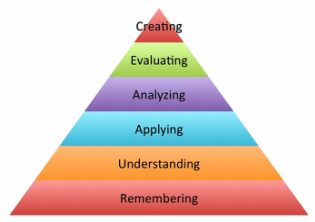Learning about learning
|
As an elearning manager, I have reviewed a lot of elearning during my career. Much of it dumps content out there followed by multiple choice questions. If training is learning new skills, then why aren't we testing the skills they are supposed to learn in our programs? What is the difference between what we do and what marketers do in content marketing? As Harold Stolovich would say, "Tellin' ain't trainin' and trainin' ain't performance." After considerable noodling, I've come up with four reasons why we assess learning so poorly.
1 Comment
I love conferences, and my friends might consider me a conference junkie. During this event, I've been struck by the fact that most of the workshops I've attended have been lectures with PowerPoint slides, one of the things that people lament about as being the dreadful part of training. I've been totally engaged by the content, and left making connections to my world. What is it about conferences that make them engaging that is such a contrast to much of our training that puts people to sleep?
So What?What does all this mean for us? How can we create right-sized learning that learners are invested in?
Impossible, you say? I'm not so sure. We do it with conferences all the time.
Are Your Learners Leaving at Intermission?I wrote earlier about the elearning that caused me to bail on getting my PMP certification because of the vocabulary spouting talking head. (Yup, I left at intermission on that one.) Last week, I was asked to take a technical training course to be able to access a software application at the office. The training consisted of 10 modules, with directions telling me I had to complete two mandatory sections and an elective. There were two mandatory items and eight optional ones. There were also two labeled advanced and eight labeled beginner. I suppose you can guess which of the ten the mandatory ones were. My goal is to be able to set up a shared resource site You'd think this would be easy, right? There is no seeming order to the modules. Each covers a different topic, with well designed how-to instructions and practice exercises. The production values were great. However, as a learner, I feel like I have no idea WHY I need to learn these things because I have no idea WHAT I'm going to do with the software so far. I have an idea of what I WANT it do do, and I suspect going to this repository to ask HOW to do these things would be a much more efficient way to access the knowledge repository of all of these skills. There is no Table of Contents of the modules. If you search the repository for the software name, you get 87 modules with titles and descriptions, but nothing that seems to overview the software or its purpose. So now I know how to mark a post Employee of the Month. Yay? Granted, there are nine other modules I need to work through, so perhaps I'll find something to meet my goals. I've found myself being baffled by the first module because I didn't have any context. I imagine that be it will the same with other modules, unless I can find something that sequences this. The best way I can explain this is to imagine yourself being dropped into the help section of a piece of software, picking random items and pretending this is the way to learn how to use it. There's a Difference Between Learning Something New And Finding an AnswerThe point of all of this is that we need to understand the learner need when we are creating training. If someone has experience and needs specific answers, send them to the repository. If they have no foundation, sending them to a knowledge repository without a curriculum plan or sequence of activities is like sending someone to the librarian to learn calculus. A librarian knows how to find specific information, and is a resource to be used thusly. When you need to learn something from the beginning, you need a teacher, or a curriculum set up by one who teaches. A teacher plans the activity and breaks things into bite sized, sequenced lessons. A librarian finds resources to find answers.
Big difference. Remember what role you play when you provide learning to your learners. |
Jean Marrapodi
Teacher by training, learner by design. Archives
January 2018
Categories
All
|
Conference
|
Company
|
|



 RSS Feed
RSS Feed